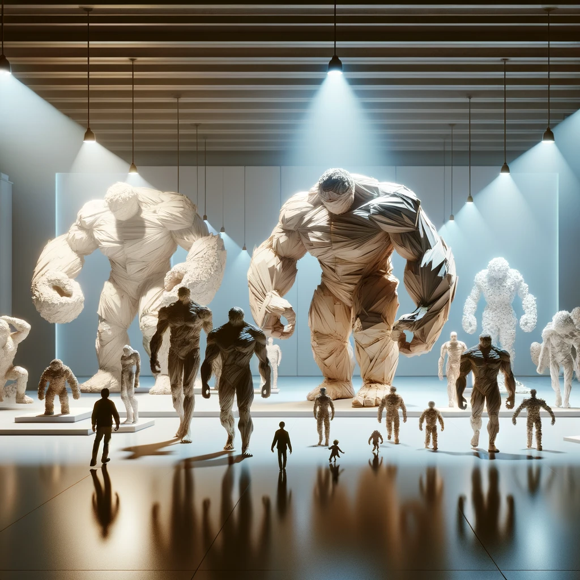Paper mache has won the hearts (and studios) of artists around the world. It’s like the ultimate creative playground – easy to use, affordable, and lets you turn your ideas into amazing 3D forms. But hold on, there’s a catch! While paper mache is awesome, it can be tricky to make really big sculptures. They might end up floppy or even crumble under their own weight. Don’t worry though, this article will show you how artists overcome these challenges and build massive paper mache masterpieces!
The Allure and the Obstacle
Paper mache (which basically means “chewed paper” in French) is a simple mix of paper bits and glue. This lets you sculpt all sorts of things, from tiny figures to human-sized statues! It’s lightweight and easy to mold, making it perfect for bringing your artistic visions to life.
But as artists get more ambitious and dream of building bigger, they bump into some roadblocks. Paper mache itself isn’t very strong, unlike stuff like clay or metal. So, if you try to make a huge sculpture, it might cave in or get all warped under its own weight. That’s why planning and some clever tricks are essential.
Building Big Without Breaking Everything
There are a few cool techniques artists use to make their paper mache sculptures super strong, even when they’re giant. One way is to build a hidden support system inside, kind of like a skeleton. This “armature” can be made from wire, wood, or anything else that’s sturdy. The paper mache then goes on top of this, and the armature helps hold everything up and keeps it from getting wonky.
Another trick is to use lightweight materials like foam or special packing peanuts inside the sculpture. This adds volume without adding a ton of weight, which is a major win. These materials work great with paper mache and give the sculpture extra support without making it too heavy.
Finally, artists can make their paper mache extra tough by layering it up like a super-strong sandwich. By putting on lots of thin layers of paper and glue, they create a strong overall structure that’s less likely to fall apart. They can also focus on reinforcing areas that might get stressed, like joints or parts that stick out, to prevent any cracks or tears.
Keeping it Light on Its Feet
Weight is another big concern with giant paper mache creations. Imagine trying to move a massive sculpture – not exactly easy! Plus, if it’s too heavy, it could damage the place it’s being displayed in.
So, artists have to find a balance between size and weight. They use lightweight materials, build their sculptures efficiently, and keep the paper mache layers thin. They might also leave some hollow spaces inside to cut down on weight without sacrificing the overall shape.
The Final Chapter: Big Dreams, Big Sculptures
Paper mache might have its limits, but that doesn’t stop artists from creating incredible things with it. By understanding these challenges and using a bit of creative problem-solving, they can build enormous, awe-inspiring sculptures. With some clever techniques and careful planning, paper mache continues to amaze people everywhere, proving that when it comes to creativity, the sky’s the limit (or maybe the ceiling, depending on how big your sculpture is!)
